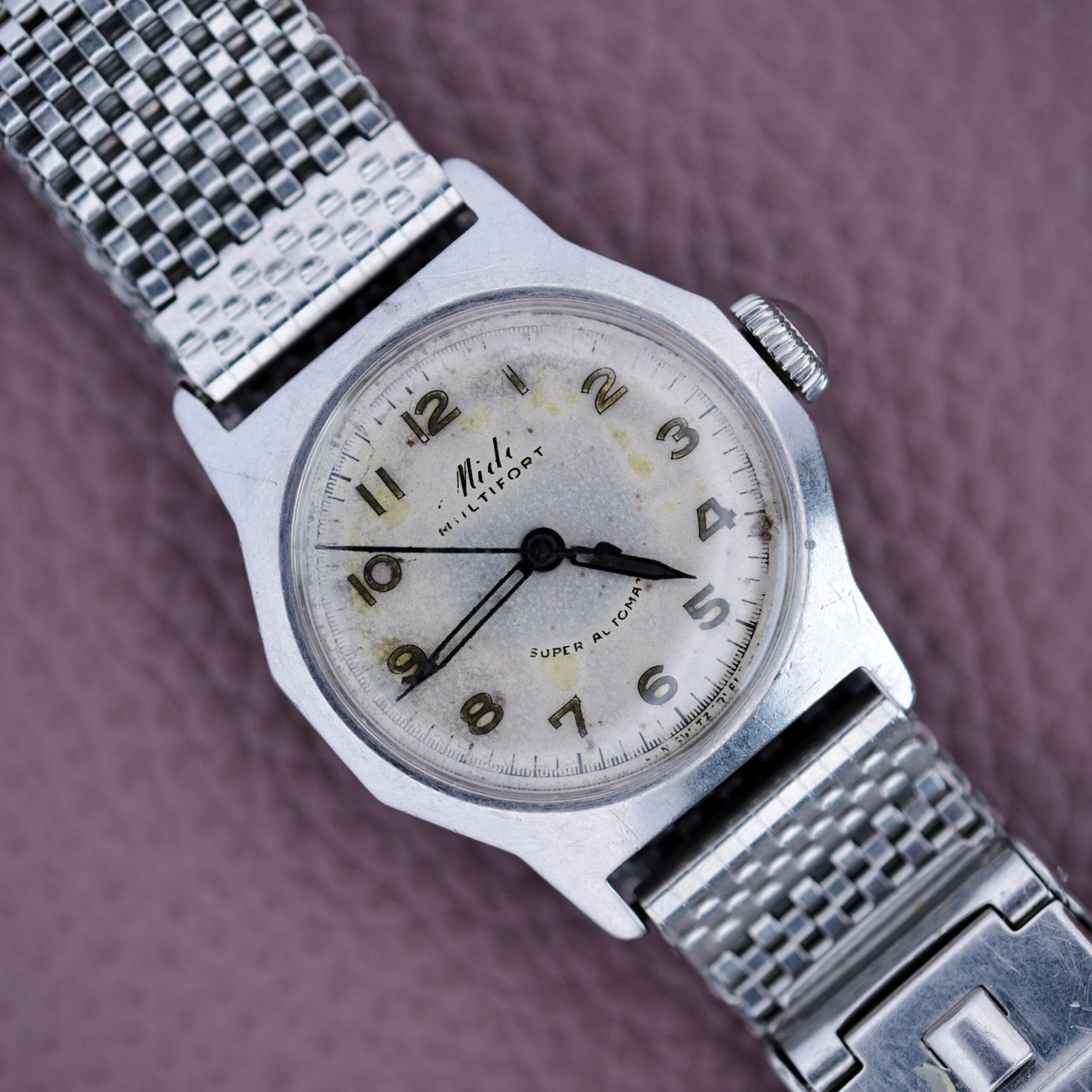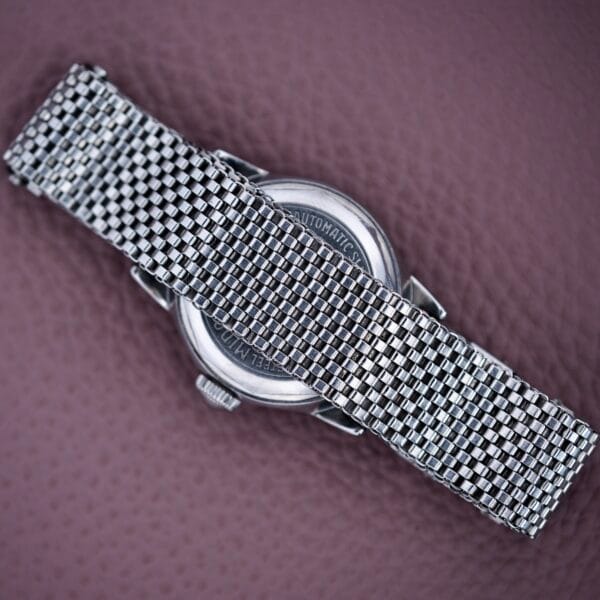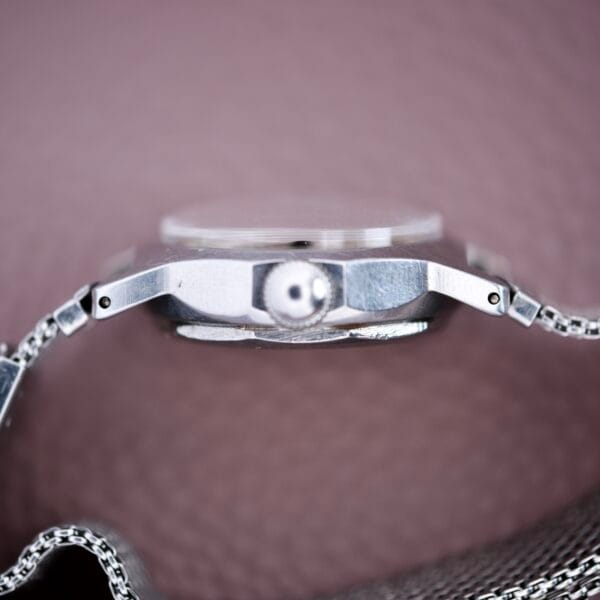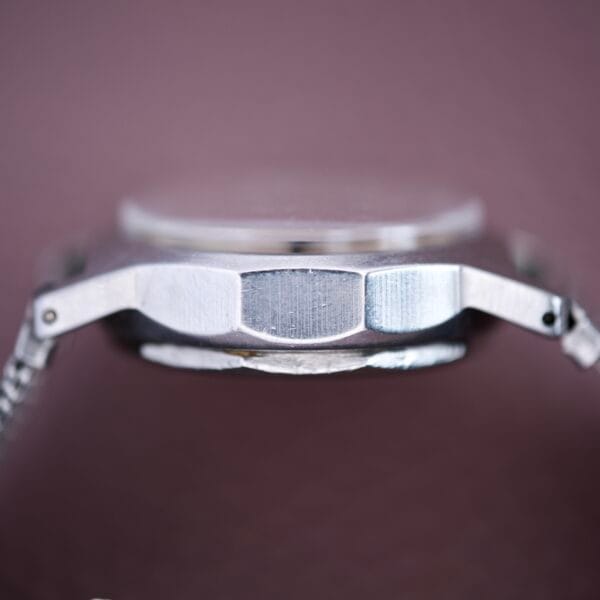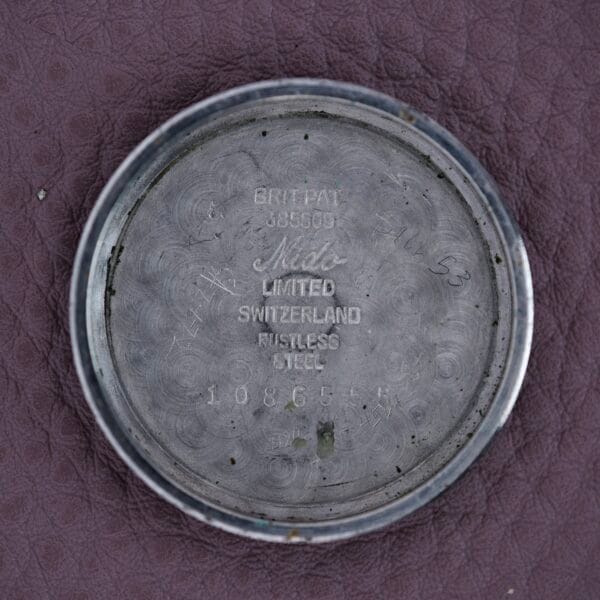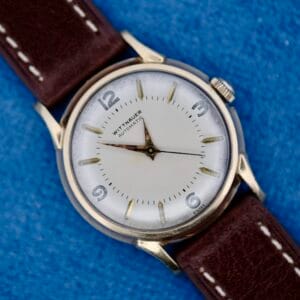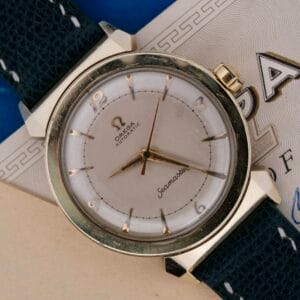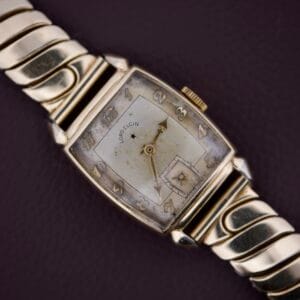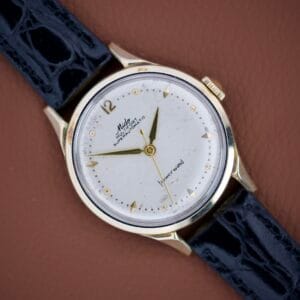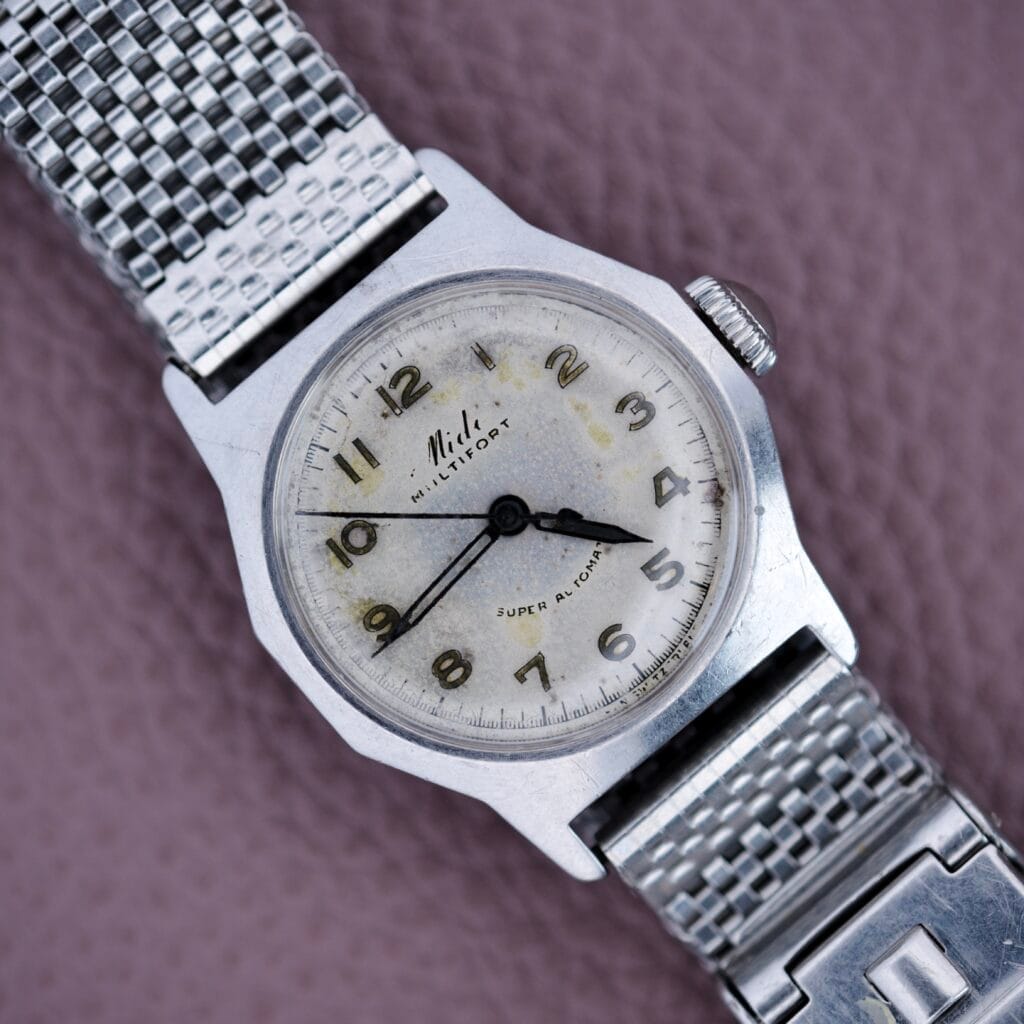Don't miss the next drop
There are certain watches that represent a genuine turning point in horological history, and the Mido Multifort is, without question, one of them. In a world of dress watches that were often delicate, the Multifort was a revelation, a timepiece that was not only handsome but also built to withstand the rigors of modern life. It was one of the first watches to feature a self-winding movement combined with water resistance, shock resistance, and anti-magnetism, making it a true pioneer of the “do-everything” watch.
Launched in 1934, the Mido Multifort line was an immediate success, thanks to its groundbreaking durability. Mido subjected these watches to incredible tests; dropping them from heights, submerging them for extended periods, and even attaching them to the landing gear of airplanes, all to prove their legendary toughness. At the heart of this particular model is a fantastic “bumper” automatic movement. Before the advent of the full 360-degree rotor, these early self-winding calibers used an oscillating weight that would “bump” back and forth between two springs to wind the mainspring. It’s a charmingly tangible piece of engineering, and you can often feel the gentle knock of the bumper weight on your wrist, a constant reminder of the mechanical marvel within.
This specific Multifort from the late 1940s or early 1950s is an absolutely stunning example of the model’s utilitarian charm. It is housed in a very cool and unusual semi-tonneau stainless steel case with thick, robust lugs that give it a decidedly masculine presence. The case measures a classic 31mm, but it wears larger thanks to its bold shape. The dial is the real star here, a stippled silver surface that has developed a dramatic and honest patina. The original radium Arabic numerals have aged to a deep, earthy brown, a process that has left ghostly “radium burn” shadows on the dial around them. To us, this is not a flaw; it is the fingerprint of time, a beautiful and authentic sign of a life well-lived. The original handset, including the elegant sweep seconds hand, is intact and retains its period-correct lume.
The watch’s condition is what we would call a true “survivor.” The case is thick and appears unpolished, with sharp lines and some honest wear that speaks to its history. The oversized crown is likely a vintage replacement, which is very common for a tool watch of this era. It is currently paired with a fantastic vintage beads-of-rice style bracelet that perfectly complements its mid-century aesthetic, though it would look equally killer on a rugged leather strap.

